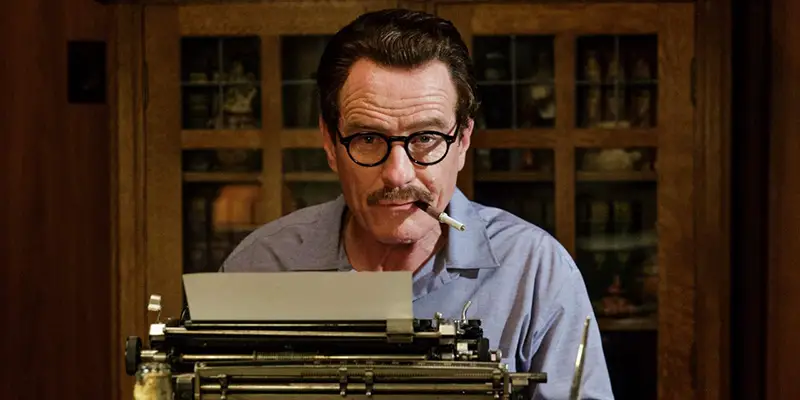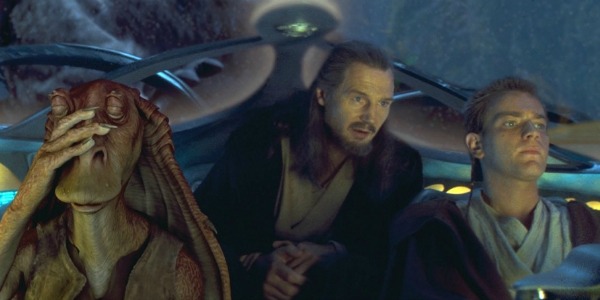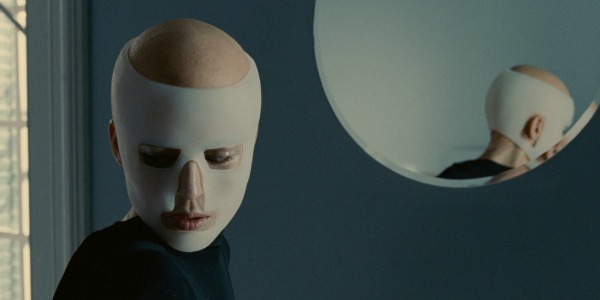What is Film Analysis? Part 1: Narrative & Character

I love film, more than people probably, and I will…
Film analysis, as far as I can tell, isn’t conducted any more in mainstream film criticism. That’s because these days anyone can write about film, and do. The film theorists and heavy-weight reviewers of the past have been overtaken by the age of the internet and by all the people ‘having a go’. Unfortunately, these days, in the ongoing battle to be right, and the fight to be the most current and cool film critic or media outlet, film analysis has fallen by the wayside. Now, popular news, as lacking as it can be, is king.
No one wants to talk about the sound editing in All The President’s Men or the issues of Reganism in the development of The Terminator films. And why not? Because they don’t know? Because they don’t want to write about it? For whatever it’s worth I’m here to encourage you start thinking about film in this way. To look harder and look closer. Film is complicated, and it has its very own language. Try to learn the language and maybe you’ll see a little further than your contemporaries. In this two-part essay I’m going to break down all the parts of film analysis, with films and on occasion books given as reference points to what I’m talking about.
The first things you’ll notice when you watch a film, no doubt, is whether you feel comfortable and whether you are being entertained. In some cases it will come down to bad acting or bad production, but for the most part it will be because of a problem with the narrative. So we’ll start there, then we’ll unpack each facet of a film a piece at a time.
Narrative
Story Arc & The Three-Act Structure
So, there’s something wrong with this film. Most likely it is the flow of the story. Scenes sometimes run on for too long but, more often than not, you’ll find that what is actually happening is that one act is dragging or another is too short. For a long time a lot of people lived and died by Syd Field’s three-act structure. However, since Field agreed it was more suited for theatre, and filmmakers chose to rebel against what they thought was a restricted system, less people set store by it.
Unfortunately, whether you like it or not, the three-act structure is an excellent method of storytelling and one which the human mind appreciates. The first act consists of exposition, the second the main telling of the story, and the third the conclusion. The one thing Hollywood always checks is the first twenty minutes of a film, to make sure that the exposition is clear and fast, so as to pull viewers into the story. There are those that will argue that this is because people have terrible attention spans these days, but the fact of the matter is, this is just the way human brains work. Would you give more than twenty minutes to something that was boring you?

Exposition isn’t really a problem these days, but occasionally it is. So if you’re feeling bored at the beginning of a film, ask what has happened, what do you know about the story? Are you interested in seeing more? If the answer is no, then therein lies the problem. The exposition hasn’t given you adequate enough story elements to gain your interest. The reverse is also true, if the film gives too much away you may find the mystery is gone.
More often than not, you will find you feel bored because the first act drags (ref: Star Wars: The Phantom Menace). Is it taking a long time for the story to get started? If, however, you’re getting bored towards the second half of the film this will be because the second act has dragged on for too long. In these cases you nearly always find that the third act has been rushed. Did you feel the film ended well? Or did you feel like you were short-changed. Were some stories left uncompleted?
In the case of a franchise or sequel you also need to identify how well the narrative has carried on from its predecessor, the worse kind of sequels are those that just repeat the original film when they really need to step it up and ‘double up’ on story (ref: Toy Story 2). When films double up on genres in ‘genre-wrapping’ (ref: Some Like It Hot) you need to isolate the stories from one another, and assess how each works, and how they flow into one another. This brings us to plot.
Plot
At the heart of every narrative is a plot. This is the crux of the story, the intrigue, its twists and turns; if this doesn’t work the film won’t. So if you’re just not ‘getting into’ a film, or are confused by it, the plot is probably the issue. Simplicity can have its good points, in comedies for example, but on the whole it can make a narrative feel rather vacant. On the flip side, over-complication can confuse matters, in such cases the third act is usually rushed in order to provide conclusions.
For the most part, these days you will find similar plots being used over and over again. People like to refer to this in their accusations that Hollywood has run out of good ideas. However, fact is that there may only be so many basic stories to work from (ref: the work of Vladimir Propp and Christopher Brooker). Not only that but there are only certain stories that people enjoy seeing. On the whole, while a crime story might be excellent, unless it is truly compelling or unusual, a lot of people won’t want to see it. They can watch crime on the news.
So when addressing plot, you have to ask: is this working? Has this been done before? Has this been done better before? And lastly, what makes this version of this particular story, different? And if it’s something truly original and unique? Shout it from the rooftops.
Popular Formulas
There are a large band of commonly used story elements and formulas. Film snobs will tell you that Hollywood do the same old thing over and over again, and that their productions are too predictable. However, as mentioned above, on the whole most people may only want to watch a certain type of story. People also thrive on the predictability of these stories, they don’t want a narrative to test them. They want the good guy to win, they want the guy to get the girl. (Notice how all these clichés are about guys? Funny that.)
While I don’t want you to accept that this is the way movies need to be made or should be made at all, when you’re critiquing a film it’s best to look at the film as a representative of that genre formula, otherwise you’ll be missing the point entirely. It’s also good to mention why that film has done it better or worse than its counterparts, and why (in the grand scheme of things) it does get a bit boring if the guy is always in charge (for example).
Gimmicks & Cliches
Even when the story flows well and the narrative is well-structured, a number of elements can affect the experience of watching a film. There are those films that stake all their worth on a plot twist, one that you will sometimes see coming. A great plot twist doesn’t excuse a bad script. Likewise, action beats are very important. People joke about the Hollywood producers who want an action scene or a joke every four pages. But fact is that if you are watching an action film without regular car chases, or a comedy without regular jokes, you might not be too happy about it.
False endings can also cause problems in a film’s viewing. Sometimes they are done well and can leave the audience shocked but satisfied. However, for the most part, these false endings can give one a sense of closure and sometimes it’s hard to re-start your attention in the story after this (ref: Hot Fuzz). So, ask yourself how it felt to you. Whether or not it made sense as part of the overall narrative, did it feel right when you watched it? If not, well, you’ve found another problem with the script.

The most intrusive and disruptive of film writing gimmicks is the flashback. For the majority of the time, this is done right. The slow reveal of the character’s past through flashback can add greatly to a film’s plot (ref: The Skin I Live In). However, in a number of cases a flashback can intrude upon the story being told and take the audience away from the current drama (ref: Saving Mr Banks).
There are many narrative gimmicks and clichés for scriptwriters to draw from, and overused as they may they can make, or even break, a film. Except in the case of narration. On the whole narration can add an extra dimension to the film’s narrative, only occasionally badly affecting the audience’s relationship with what’s on screen. Ever watched a film where the tension has been completely undone by the intrusion of the protagonist’s voice? (this argument is addressed well in Adaptation). But still, despite its success, always ask whether a narration is working. Also, ask how efficiently it’s being used, has the scriptwriter subverted its use? (ref: Stranger Than Fiction and Sunset Boulevard). Has this added to the film? Or taken away from it?
Dialogue
Now, to dialogue. Dialogue is never so bad a script editor can’t fix that. Even the worst dialogue can sometimes be improved by a good director. However, there will always be a few cases. So, ask yourself, what’s wrong with the dialogue. Is it good, bad, awful? Why is it awful? Is it because it’s clichéd? Or is it because the actors have not delivered it properly? Perhaps the director misread the scene? (Regression is a good example to focus on). Dialogue is usually the best indicator of depth in a narrative. So many stories are the same, yet what sets them apart is how the writer handles them.
More important still is the depth and complexity of the narrative’s characters.
Character
Once you’ve dealt with how well the narrative has worked you will ultimately always turn to character. How realistic are these characters? Are they complex? Are they rich enough for the story they are telling? In many cases, comedies for example, the complexity of a character is less essential, the scenarios are the things. However, in any script of worth it’s important that the characters show depth and motivation throughout the story.
One glaring problem in bad scripts, and one that is skimmed over by many people, is that of character continuity. This is usually a problem in television but can appear quite readily in film. A well-written script will mean that you will understand the characters and their motivation. However, if a character who you hated is suddenly the hero, or, the woman you thought was strong and cool is suddenly only doing whatever her boyfriend wants, you have to ask yourself, is this what these characters would do?

Audiences, too readily, give in to what the scriptwriter has created, and get mad at characters. The fact of the matter is, though, that these characters are not always accurate portrayals (ref: Fifty Shades Of Grey). As complex as people are, they also don’t change overnight. It’s exciting to think that a character has some heroic or creative side that could just burst out, however, in some cases the scriptwriter hasn’t thought too deeply about it or written very well. What you get are shallow characters, who you’ll never really like or connect with because you’ll never really understand them.
In many cases, scriptwriters will lean back on stereotypes. And in many cases they can’t go wrong. Stereotypes are shortcuts. They let the audience know quickly who is the good guy, the bad guy, the love interest, et cetera. Many an action film has thrived on stereotypes. However, stereotypes are clichés, overused, and in some cases, insulting. While useful shortcuts, all to often they are used by scriptwriters to insert a stereotypical woman or a black character into their script. It’s lazy and it’s bad scriptwriting, so if you see something like this, call a foul.
Archetypes are different. Archetypes are more appealing as characters and can be used as a similar shortcut. But still, here, pay attention to the depth of the character. Are they believable as a character to you? Do you understand their motivation? Do you sympathise with them? Lastly, do you like them? Whether you like a character or not needs to be analysed. Are they the good or bad guy? Do you like them because they’re a good person? Do you hate them because they are the villain? It should be straight forward, when it’s not, this may be because of a lack of character continuity. At the end of the day, when characterisation is done correctly, you should even like the villain for being so bad.
True Stories and Documentary
All the above critical techniques can likewise be applied to documentary, but with a few caveats. While it’s still important to look at narrative you also need to check for factual evidence and how that evidence has been interpreted. Has the documentary remained objective? If not, why? Is subjectivity important in this particularly story? How has it affected the outcome of the documentary? Lastly, and this is where the information above becomes important, has a true story garnered the Hollywood treatment? Is it now more narrative film than it is factual reality?
When you’re watching a film that’s based on a true story things become complicated all over again. All the aspects of narrative film should be analysed, but then you need to be even-handed and balance them against those elements that you would analyse in documentary. How close to the true story is the film? How effective is it in conveying the story? What has been left out, what has been left in? Importantly, has the film created a bias? Or has it changed the overall story entirely? In these types of productions, scripts may have to shed a few of the original story elements to simplify things. It’s important to be mindful of this and be fair in your assessment of the film’s choices. One film cannot, for example, encapsulate a whole person’s life.
Of course, though, a lot of makes a good film lies in its physical making. Whether it be in casting, sets or the understanding of the director. This takes us to production.
Find part two, which covers production, visuals and direction, here.
Does content like this matter to you?
Become a Member and support film journalism. Unlock access to all of Film Inquiry`s great articles. Join a community of like-minded readers who are passionate about cinema - get access to our private members Network, give back to independent filmmakers, and more.
I love film, more than people probably, and I will watch pretty much anything. Seriously, anything! I have a postgraduate education in film & have spent an exceptionally long time trying to get inside the film industry. I'm a big believer in treating every film the same, and bringing something new to the film theory table, giving reasons for every argument made. You'll find that I'm an empathetic and fun sort of reviewer, at least, I like to think so. If I'm not watching films I'm doing exceptionally nerdy stuff, like watching documentaries about the history of medicine and collecting photos of old post boxes.













